
We have just wrapped up our biggest annual survey, The Great Indian Smartphone Survey 2020. Over 15,000 users helped us understand a number of smartphone satisfaction-related trends this year, from brand ownership to most-desired features to smartphone use cases during the COVID-19 pandemic. The survey also helped us come with insights on user satisfaction with brands, after-sales service satisfaction, and brand loyalty.
We have summarised the survey to highlight some of the biggest takeaways of the year. The full report is embedded below for your reference, followed by the key takeaways.
Table of Contents
Section 1: Smartphone ownership trends
Current ownership
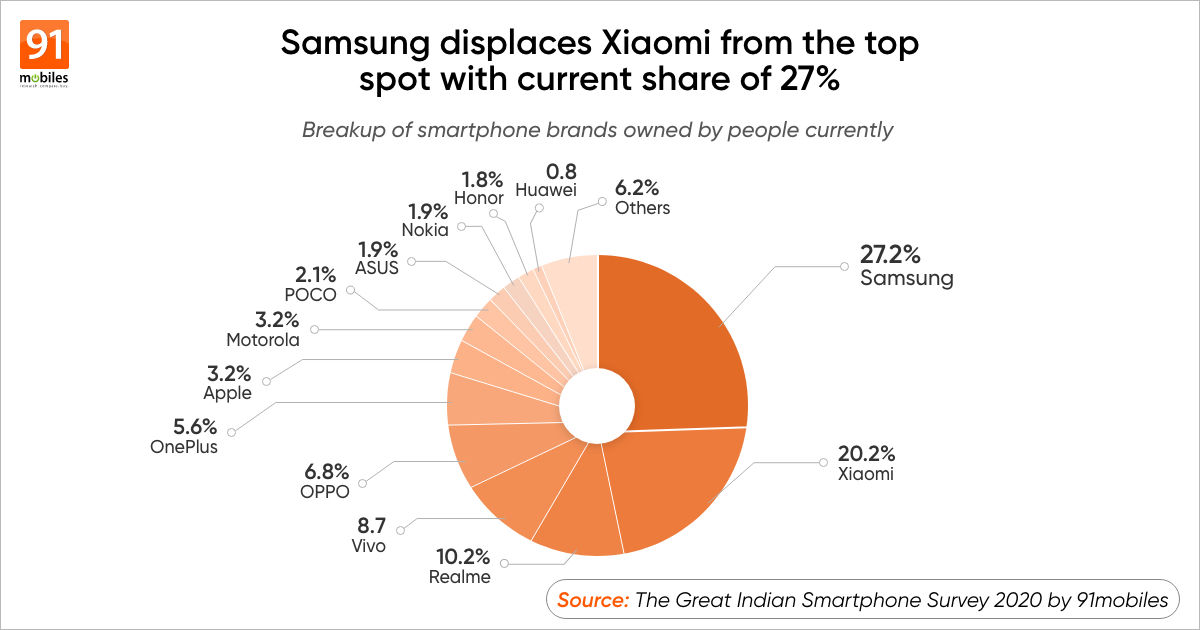
- Samsung is the top-most brand in terms of current ownership with 27.2 percent survey respondents owning the company’s smartphone. Samsung has managed to displace Xiaomi from the top, which is now trailing second with 20.2 percent ownership share. Realme holds third place with 10.2 percent.
- The percentage of people owning Samsung devices has grown from 21.4 percent in 2019 to 27.2 percent in 2020. Apple and Vivo have also seen an increase in ownership in 2020 compared to last year.
- The percentage of people owning Xiaomi devices has dropped from 23.6 percent in 2019 to 20.2 percent in 2020. Huawei, Honor, ASUS, Motorola, and Nokia have also witnessed a decline in ownership share this year.
Brand preference: smartphone brands users plan to buy next
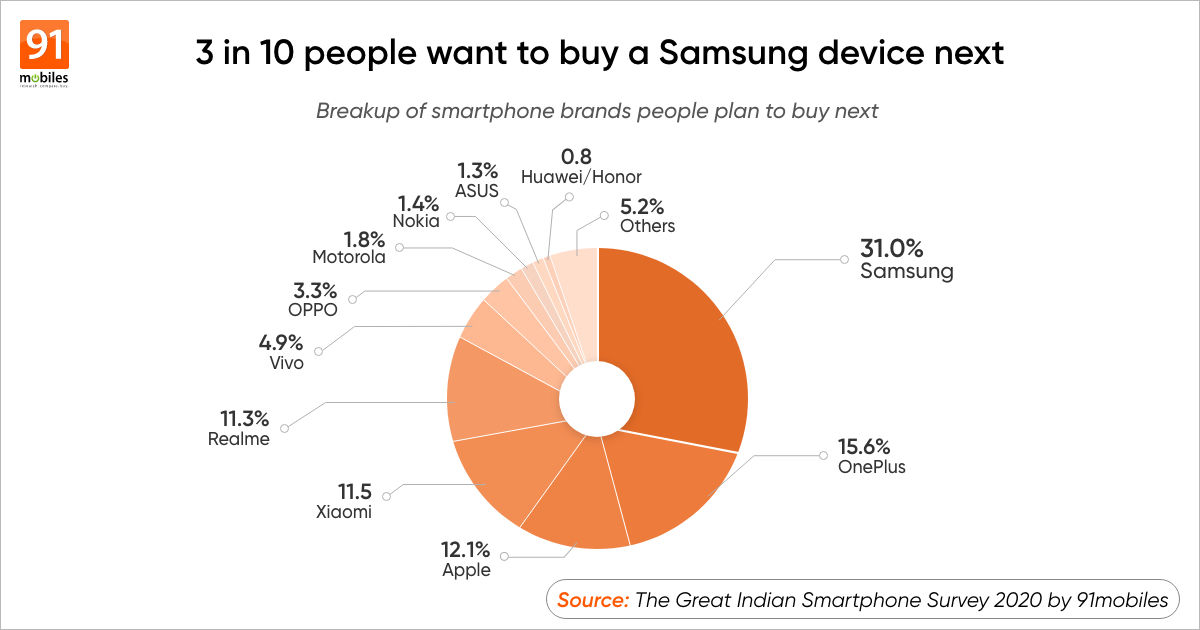
- Samsung is once again at the top when it comes to brands that people plan to buy next. Around 3 in 10 people say they plan to buy a Samsung device next, which indicates that the brand’s rejigged smartphone strategy is working, be it in the budget and mid-range segment or the flagships.
- OnePlus comes second here with 15.6 percent of survey takers looking to buy a OnePlus phone next. Interestingly, Apple has come in third with 12.1 percent looking to own an iPhone next. This is probably because of the aggressive pricing strategy with phones like iPhone 11 and iPhone SE 2020 along with heavy discounts seen during major sales on e-commerce platforms.
- It seems Xiaomi will lose the most users in the future as only 11.5 percent of survey takers are planning to own a device from the brand compared to the current share of 20.2 percent.
- Surprisingly, only three out of 10 Realme users plan to buy a smartphone from the same brand next. Despite launching back-to-back value-for-money phones throughout the year, it seems user satisfaction for Realme has dropped, which could impact its future ownership share.
Features people want in their phones
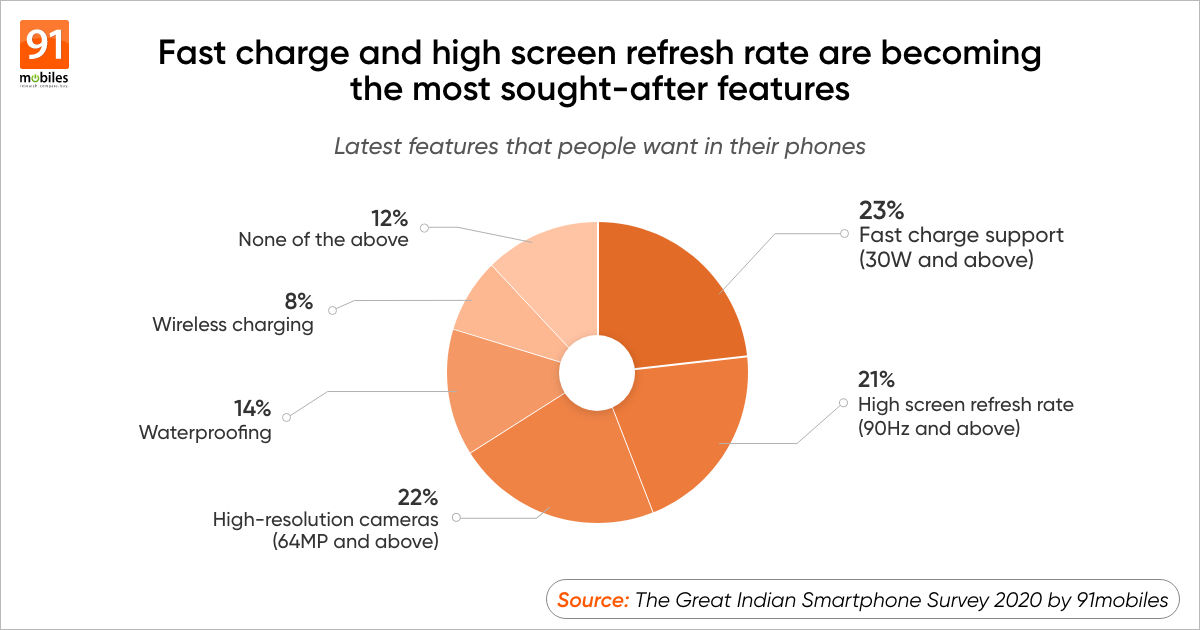
- Some of the most sought-after smartphone features in 2020 include fast charging support, a high screen refresh rate, high-resolution cameras, waterproofing, and wireless charging.
- Among these features, fast-charge support (30W and above) and high screen refresh rate (90Hz and above) are the most sought-after features among the survey takers. Last year, waterproofing was the most desired feature, but this has now taken a back seat for most people.
- Despite the convenience it offers, wireless charging is not a feature that many users seem to be interested in and this hasn’t changed since last year.
Popular smartphone use cases during COVID-19
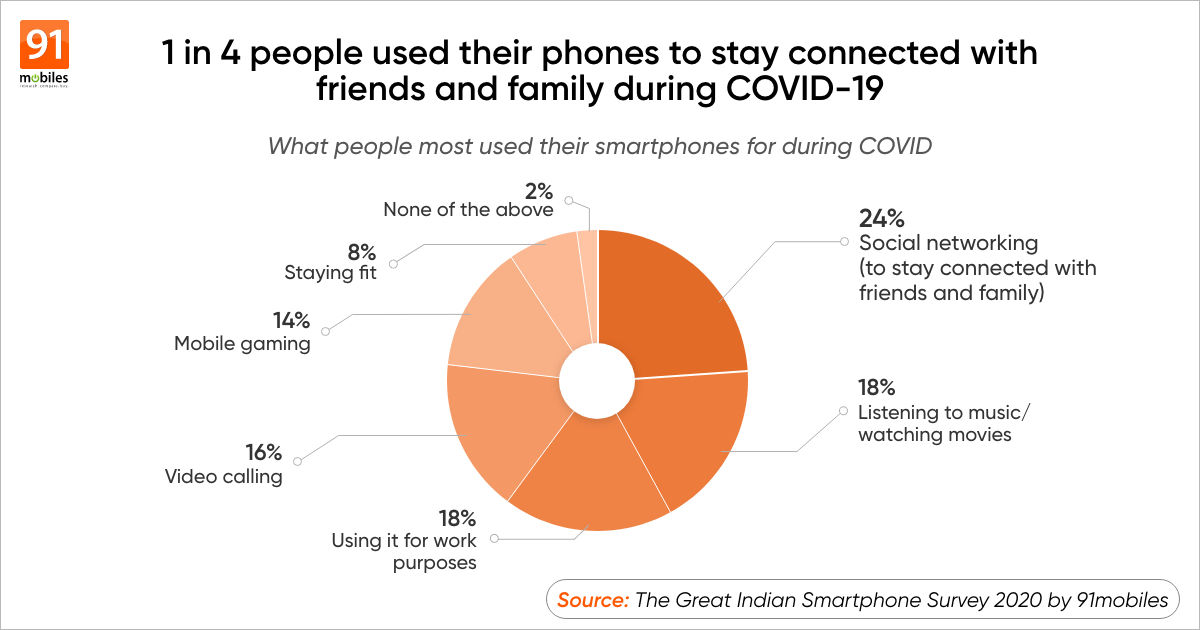
- The COVID-19 pandemic in 2020 saw our dependence on smartphones grow in a big way. People used their phones for a number of reasons, including social networking, listening to music, or watching movies, video calling, work purposes, mobile gaming, and staying fit.
- Social networking was the most popular smartphone use case with 24 percent of survey respondents saying they used it for staying connected with friends and family during the lockdown.
- Around 18 percent of people used their smartphones for entertainment purposes i.e. listening to music or watching movies. The same percentage of users used their phones for work purposes. This was followed by video calling, which was the most common use case for 16 percent of the respondents.
- Over 60 percent of the survey takers said their phones were able to handle the increased usage due to COVID-19, while 22 percent said their phones were not able to handle the workload. This is an interesting trend as it suggests that more and more budget phones are capable of handling intensive tasks due to capable hardware.
Demographic trends
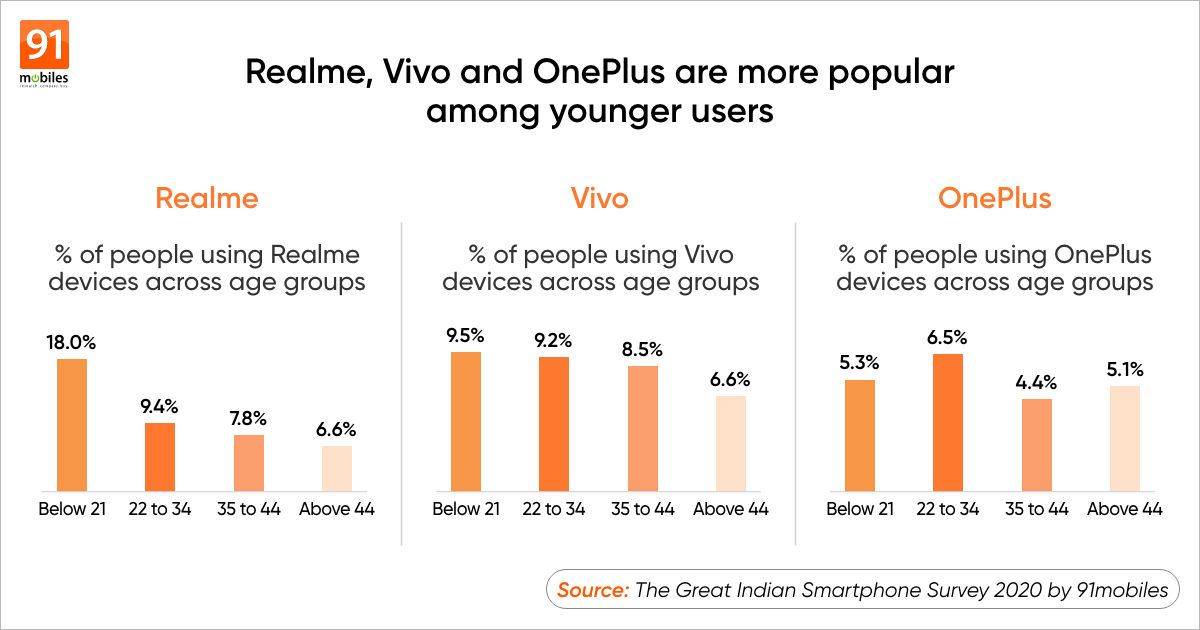
- Realme is a youth-centric brand and rightly so, as over 18 percent of people using Realme devices fall below the age of 21. As the age group increases, the percentage of Realme users sees a steady decline.
- OnePlus is popular among those aged between 22 and 34, while a majority of Vivo owners (within our survey group) fall under the age of 34.
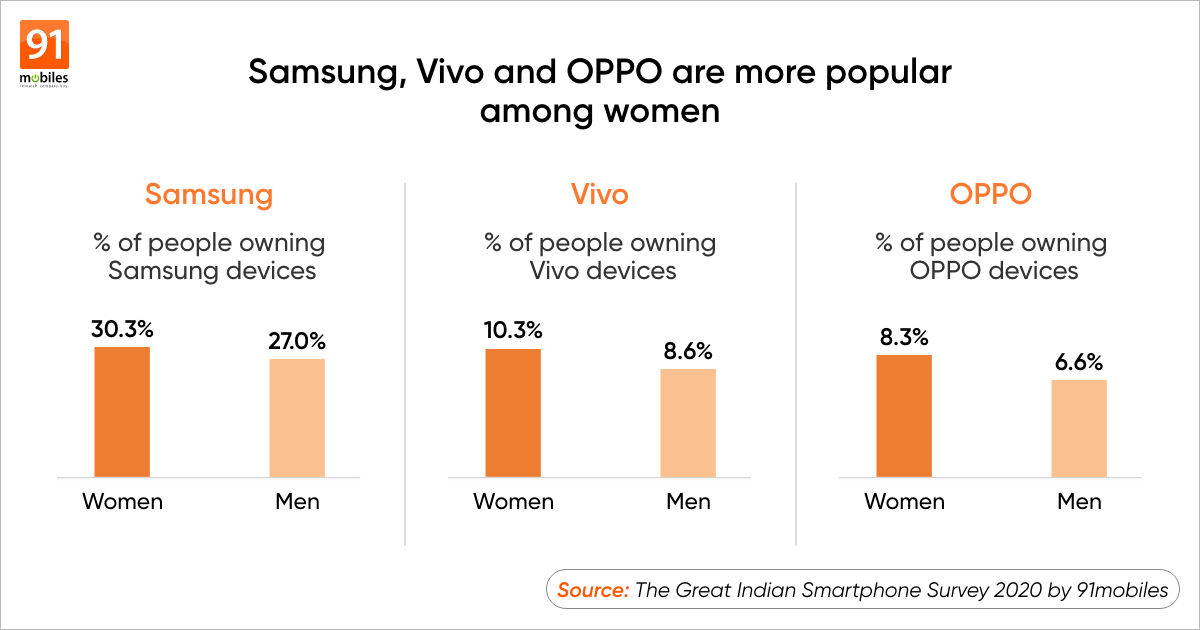
- Household brands like Samsung and Motorola are trusted among older users. The majority of Samsung and Motorola users fall above the age of 35.
- Notably, Samsung, Vivo, and OPPO seem to be more popular among women while brands like Realme, OnePlus, and POCO are more popular among men.
Section 2: User satisfaction with current smartphone brand
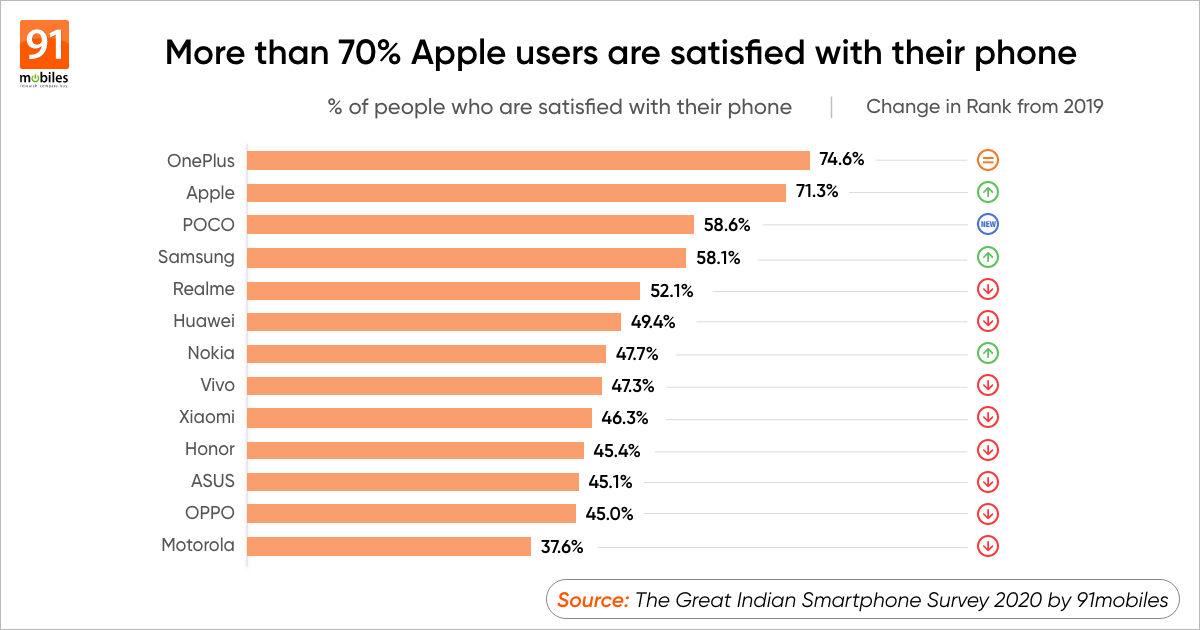
- OnePlus and Apple rank the highest when it comes to user satisfaction. 7 in 10 users say they are happy with their OnePlus and Apple phones. The two brands also enjoy the highest user satisfaction in terms of phone performance and cameras.
- Motorola ranks the lowest in user satisfaction with only 37 percent of Motorola users satisfied with their device. According to our survey, the reason behind this seems to be the low satisfaction with software performance and poor service quality of its offerings.
- ASUS is the best brand when it comes to battery reliability with OnePlus coming in a close second. Apple on the other hand, ranks the lowest in battery reliability.
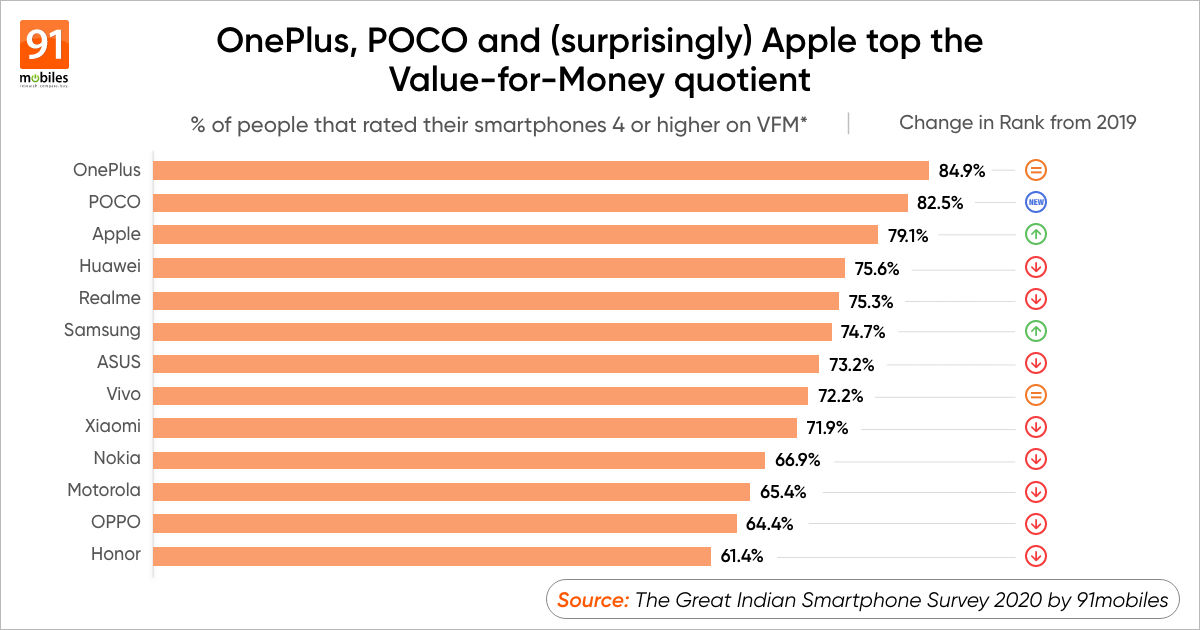
- OnePlus and POCO are the top two brands when it comes to scoring high on the value-for-money quotient. Surprisingly, Apple comes in third with 79.1 percent users giving the brand’s smartphones over 4 (out of 5) on this parameter.
- Notably, OnePlus beats Samsung when it comes to user satisfaction with the phone’s display capabilities. Over 70 percent OnePlus, Samsung, and Apple users are satisfied with their phone’s display. This doesn’t come as a surprise as phones from these brands consistently deliver A+ display ratings on tests by DisplayMate.
- Apple and OnePlus once again top the list in terms of software performance with over 80 percent user satisfaction. OPPO ranks the lowest with only around 44.9 percent of users satisfied with OPPO’s software performance.
Section 3: Peoples’ rating on the quality of after-sales support
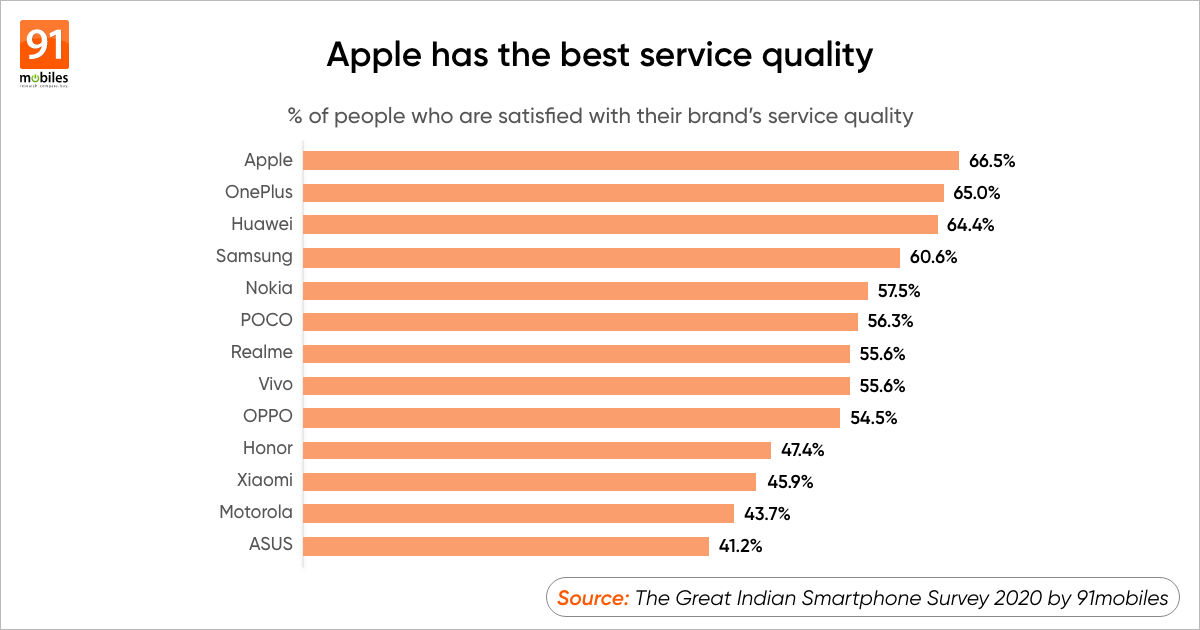
- According to our survey, 1 in 2 people has visited a service centre to fix their phone’s issues. Roughly 16 percent of those who have visited a service centre say the quality of service offered was average.
- Apple has the best service quality with 66.5 percent of people saying they are satisfied with the brand’s service quality. This is followed by OnePlus and Huawei. With the Apple Store Online now live in India and reports about Apple’s first-ever retail store opening in the country soon, we expect to see the brand’s service quality improve further in 2021.
- ASUS and Motorola rank the lowest when it comes to user satisfaction with service quality.
Section 4: Smartphone brand loyalty
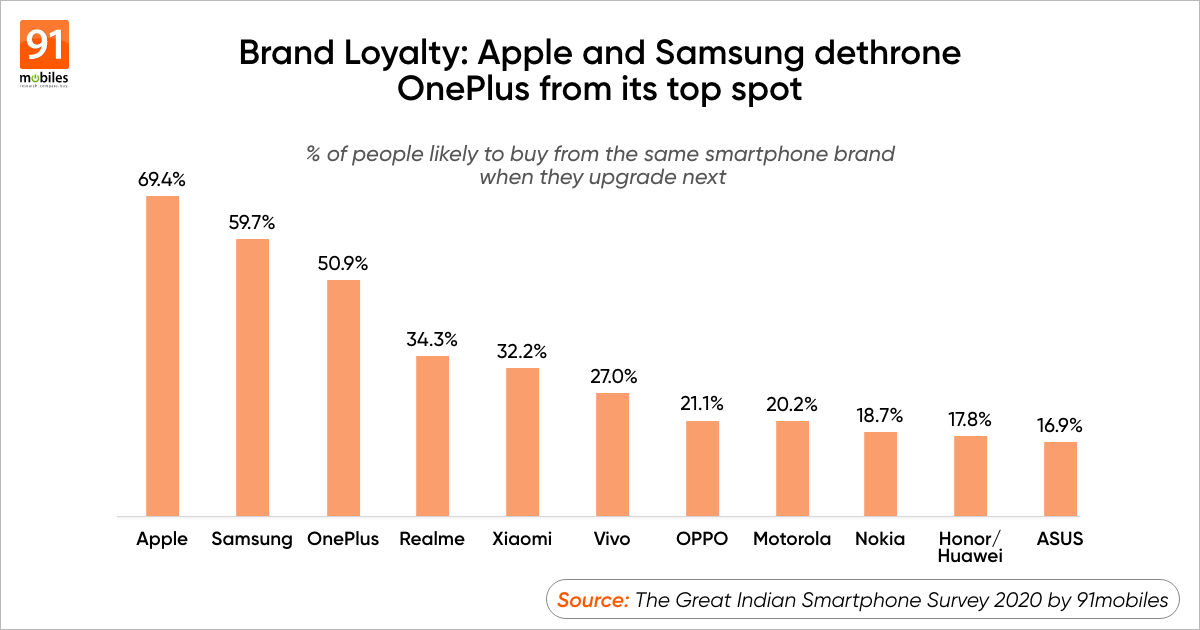
- Apple and Samsung take the top two spots when it comes to brand loyalty, dethroning OnePlus. Around 69.4 percent of Apple users are likely to buy from the same brand when they upgrade next.
- Samsung saw the biggest jump in brand loyalty with 59.7 percent of users looking to buy from the brand when they upgrade next, up from 44.1 percent last year. Samsung’s jump in brand loyalty is the biggest and is likely due to the compelling range of phones that the brand offers across various price tiers. Phones like the Samsung Galaxy M51 and Galaxy A51 have been a few noteworthy launches by the Korean giant.
- OnePlus saw a decrease of 11.9 percent in its brand loyalty from 2019. Meanwhile, Nokia and Honor/Huawei saw the biggest drop in brand loyalty. This isn’t surprising considering Nokia hasn’t launched a lot of phones in India in 2020 while Huawei and Honor have taken a major hit due to the US-China trade war.












![Best camera phones under Rs 20,000 [June 2024]: OnePlus Nord CE 4 Lite, Realme Narzo 70 Pro, POCO X6, and more Best camera phones under Rs 20,000](https://www.91-cdn.com/hub/wp-content/uploads/2024/06/Best-camera-phones-under-Rs-20000-100x70.png)